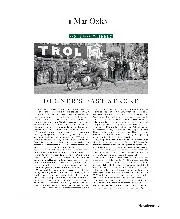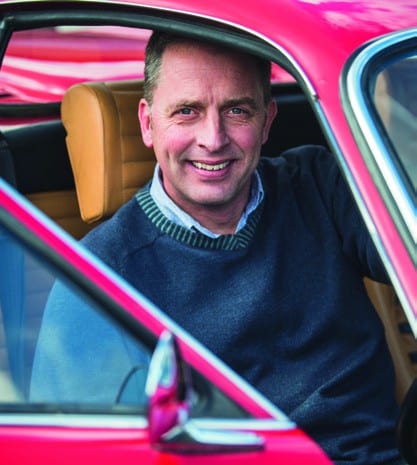
Degner's fast stroke
This year Suzuki becomes the third Japanese factory (after Honda and Yamaha) to celebrate half a century in Grand Prix racing. The smallest of the Japanese marques hasn't had a…

In the eye of the storm it’s difficult to focus on anything other than the surrounding chaos and yet, as a certain Mr Dury (aided by The Blockheads) once sang, there still remain ‘Reasons to be Cheerful’.
Part 1. The gift of hindsight shows the doom-mongers and naysayers were wrong. Despite hiccups, monumental upheaval and life as we know it changing beyond all recognition, 2020 was a relatively good year for the classic car world.
In fact it can now be viewed as one of opportunities, whether you re-ordered priorities, took the plunge on a purchase or even finally embarked on a long-awaited project. And from a professional perspective, sales and auctions were in fact stronger than they had been for a few years. It’s a buyers’ market; anyone silly with their pricing was laughed at, but decent presentation and prices were rewarded. In fact, with lockdowns and tiers, the one thing 2020 wasn’t good for, was driving.
Part 2. It’s ironic then, that it’s now enthusiasts driving (no pun intended) the market, and our prediction is that will continue to be the case in 2021. Let me show you examples…
One such hotspot is Alfa Romeo’s delectable Giulia 105 Series Coupé. They’re lovely to look at, joyous to drive and offer a range of gutsy twin-cam engines; add in simple to fix, excellent parts availability and a whiff of Italian exotica, and aficionados can’t get enough of them.
We recently sold a South African 2000GTV for £21,500 – strong money for a car with no paperwork and still requiring a degree of titivation. While an example of the less sought-after GT Junior, which although concours, was modified and had the ‘wrong’ engine, sold online for a model record £50,000. Someone wanted that Alfa.
Compare that to Italian junior supercars of the same era, such as the De Tomaso Pantera or Maserati Khamsin. Fifteen years ago, you could famously buy one for used Ford Mondeo prices. They then shot up to £100k in the investors’ market, but they’re dropping back and recent sales approaching £70k are now much lauded in the press. Enthusiasts know the allure of big exotic cars is often different to the reality of running one (costs, fun, reliability, ease-of-use), even if they do have pop-up headlights (that sometimes work).
“A semi-defeat for Covid will get our bums firmly back in our driver’s seats”
The net result of the demand on these two examples is that they now almost overlap in desirability and therefore price.
Part 3. Shifting demographics are a given in our industry, yet still they take some by surprise. It happened with the pre-war market and this generational move continues, with the march of the wealthy 40-somethings ensuring cars of the ’90s are now hot stuff.
Despite being a JDM car (not even one of the fabled 16 UK cars) and modified, our recent Subaru Impreza 22B achieved a whopping £106,000 – for a Scooby!
So to complete my 2021 prediction: I see a reduced demand for ’50s and ’60s cars, maintaining a recent trend. Not a collapse, more a continued gentle drop. Good news if you’re a fan of metal from those decades.
Chancellor Rishi Sunak also reminded us that we’ve not yet felt the economic impact of the pandemic and, with the effects of a snatched last-minute Brexit deal on our industry still uncertain, there could be choppy waters ahead.
However, with multiple vaccines on stream, a semi-defeat for Covid is hopefully likely. That will get our bums firmly back in our driver’s seats and that’s surely the best of my ‘Reasons To Be Cheerful’.
When that happens, we’ll call it Part 4.